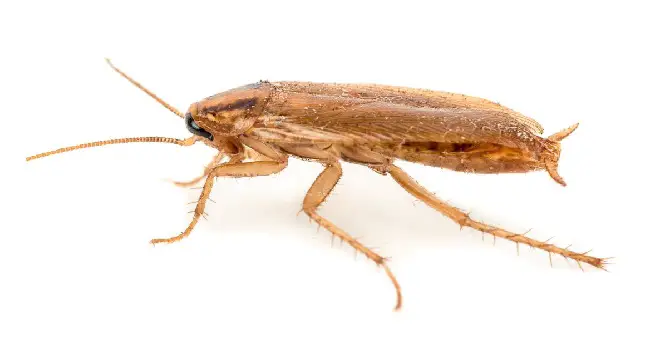Cockroach vs Termite

Both cockroaches and termites are common pests in many households around the world. To the untrained eye, they might seem similar, but a closer look reveals significant differences in appearance, diet, habitat, and behavior.
By understanding these differences, one can better address and manage these pests. This article aims to provide an in-depth comparison of cockroaches and termites, catering to anyone intrigued by the world of cockroaches.
Cockroach vs Termite Table
| Aspect | Cockroach | Termite |
|---|---|---|
| Body Shape | Flat, oval-shaped | Straight-sided |
| Antennae | Long and flexible | Straight, bead-like |
| Wings | Thicker, rests flat on back | Two sets, of equal length |
| Habitat | Moist, dark places | Wood, mud tubes |
| Diet | Omnivorous scavenger | Cellulose (mostly wood) |
| Threats | Disease spreader | Structural damage |
| Lifespan | Few months to a year | Workers: 1-2 years, Queens: decades |
Appearance
Let’s delve deeper into the differences in appearance between cockroaches and termites, as they are often mistakenly identified as each other.
- Cockroaches: These insects are generally more robust and larger than termites. They boast a less segmented body, giving them a distinct shape. Their rugged appearance and rapid scurrying motion often make them an unwelcome sight in homes.
- Termites: At first glance, termites might be confused with ants due to their similar body structures. They have two straight antennae, a pronounced head, and a wide midsection. This distinguishes them from the curvier shape of the cockroach.

Diet
The diets of cockroaches and termites play a vital role in understanding their behavior, habitat preferences, and, most importantly, their methods of infestation in human dwellings.
- Cockroaches: These creatures are survivors, and their omnivorous diet is a testament to that. They consume both plant and animal matter. From leftover food scraps, paper, and even clothing, cockroaches aren’t particularly fussy regarding their meals.
- Termites: Unlike the versatile cockroach, termites have a specialized diet – they feed on wood. Their ability to digest cellulose allows them to break down wood fibers, making them a menace to wooden structures everywhere.
Habitat
Understanding the habitat of cockroaches and termites can aid in identifying, preventing, and controlling infestations.
- Cockroaches: A lover of the dark, the cockroach seeks out moist places to nest and hide. These spots often include behind walls, inside cabinets, and in other shadowy places like attics and basements. Their preference for such locations is a primary reason they are often discovered only when their population becomes significant.
- Termites: These insects are masters of concealment, building their colonies inside the cracks and crevices of wooden structures. An infestation can go unnoticed for years, causing considerable damage to the structural integrity of homes.

Behavior
Cockroaches and termites, though both insects exhibit distinct behaviors that are fascinating in their own right. Let’s dive deeper into the behavior of these two creatures.
- Cockroaches: Known for their adaptability, cockroaches can thrive in many environments. While they exhibit social behaviors, they often scurry away individually when exposed to light or human activity.
- Termites: These insects live in large colonies, often comprising hundreds or thousands of members. This social behavior means they operate as a unit, leading to more structured and systematic property damage.
Conclusion
While both cockroaches and termites are often unwelcome guests in our homes, understanding their differences is crucial. It aids in effective pest control and helps homeowners take proactive steps to protect their spaces.
Whether you’re looking to get rid of an infestation or just intrigued by the nature of cockroaches, remember that every creature, no matter how bothersome, plays a unique role in our ecosystem.

James E. Butkovich, Pest control maven with a knack for eco-friendly & Chemical solutions. Blogger with a mission to make homes pest-free, one post at a time.